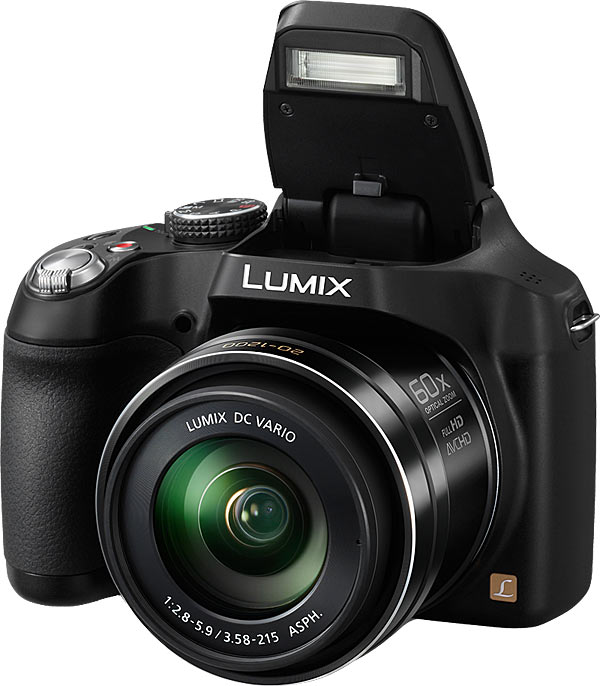Review Date: September 30, 2013
Category: Beginner to Serious Amateur


Photoxels Silver Award – Superzoom
USER’S EXPERIENCE
Thursday, September 12, 2013 – Here’s what you can expect to receive in the box (country dependent):
- FZ70
- Rechargeable Li-ion battery DMW-BMB9PP 7.2V 985mAh 6.5Wh
- Wall plug-in recharger DE-A83
- Lens Cap, Retaining String
- Shoulder Strap
- USB Cable
- Documentation: Basic Owner’s Manual
- Software CDs: [Advanced] Owner’s Manual; Panasonic PHOTOfunSTUDIO 9.2AE (Win)
Zoom Power. The Panasonic FZ70 is currently the super zoom camera with the most zoom. It’s not so much at the long end of the focal length (since it is not the only super zoom with a 1200mm equivalent focal length) but it is at the ultra wide-angle 20mm end that the FZ70 makes its mark. Most super zoom camera is unable to provide such an ultra wide-angle coverage. Optical image stabilization is built-in and I find it amazing that, if you have stable hands, it is quite possible to hand hold the camera even at the long end of the tele focal length.
Observant users will notice that the lens is a DC VARIO, which is a LEICA brand. However, it is not a LEICA lens but a LUMIX one. When I pointed this out, the Panasonic rep explained that they have succeeded in meeting LEICA’s stringent lens design and manufacturing standards and have been granted the rights to use the DC VARIO branding.
The FZ70 will sell side by side with the FZ200 which features a bright maximum F2.8 aperture throughout its whole 24x (25-600mm equiv.) optical zoom range. The FZ70 offers a much more powerful 60x (20-1200mm equiv.) optical zoom range but the aperture varies from F2.8(W)-5.9(T). Each camera therefore caters to a different audience, with the FZ70 appealing to those desiring the most powerful zoom range while the FZ200 appealing more to those who value the fast F2.8 aperture which allows the use of a lower ISO, faster shutter speed and thus better image quality at the long end of the zoom.
If you want even more reach, the optional Tele Conversion Lens DMW-LT55 (requires Lens Adaptor DMW-LA8 for attachment) will allow you to zoom from 1,190 to 2,040mm (35mm camera equivalent).
The Panasonic FZ70 is fast, responsive (though, of course, not as fast and responsive as a DSLR) and you’ll be able to get good pictures at both the ultra wide-angle as well as the super tele focal lengths. In other words, the FZ70 is a great camera for travel photography as you’ll be able to take wide vistas as well as zoom in close to the action. The one thing you do have to watch out is that as you zoom to the longer focal lengths the maximum aperture decreases and requires the use of a slower shutter speed and/or a higher ISO. Image quality is very good for a small sensor when used at the low ISOs and at the wide end of the focal length but image quality decreases as the focal length and/or ISO increases. For Web size publishing, you might be able to get away using a high ISO 800, otherwise don’t go higher than ISO 200. Also, its Tracking AF is not as fast as on a DSLR, so though the zoom range may seem good for sports photography, you may find it challenging to both follow the action and capture the right moment.
The Rear Dial allows for quick camera settings choice and changes. It is clickable and toggles between setting the various shooting modes and setting exposure compensation. It’s a bit confusing at first because the screen does not display the mode you are in but what mode you’ll be in when you click it. So, in P mode, it toggles between Program Shift and exp. comp. In S mode, it toggles between setting the shutter speed and exp. comp. In A mode, it toggles between setting the aperture and exp. comp. In M mode, it toggles between setting the shutter speed and setting the aperture. In iA mode, it toggles between adjusting the brightness, the background defocusing and coloring. The clickability has just enough tension that you will not inadvertently click it.
You can zoom during movie recording and the zooming sound is barely heard above a whisper. With Continuous Focus set, the camera will refocus once you stop zooming. If you use the retaining string for the lens cap, be warned that if you let the latter swing, the retaining string will rub against the side of the camera and make some noise.
You can take one [1] still picture [3.5M] (16:9) during movie recording by pressing the shutter button fully. Since the camera uses the electronic shutter, you will [disconcertingly] not hear any shutter click; the still picture is however taken and the camera will continue recording (in the same clip). You can also select Creative (Expressive, Retro, Old Days, High Key, Low Key, Sepia, Dynamic Monochrome, Impressive Art, High Dynamic, Cross Process, Toy Effect, MIniature Effect, Soft Focus, Star Filter, One-Point Color) and PASM shooting modes for movie recording.
 |
 |
 |
 |
 |
 |
 |
 |
 |
 |
 |
 |
 |
 |
 |
 |
 |
 |
 |
 |
Click on thumbnails above to view Filter effects
TIP: To select One Point Color, rotate the Mode dial to Creative Mode – click MENU/SET and select One Point Color – click MENU/SET – press Fn2 and position the AF Frame onto the color you want to retain – press MENU/SET to sample the color. You should see what color(s) you will capture on screen.
TIP: To increase your success rate of selecting the color you want to retain in One Point Color, first make the AF Frame as small as possible. To do that, press FOCUS – rotate the Rear dial until you get the smallest AF Frame – press MENU/SET. Then, you want to click the Rear dial – select Amount of color retained – select small amount (all the way to the LEFT) of color to retain. If you select large amount (all the way to the RIGHT) color to retain, you get the results below:
 |
 |
 |
 |
 |
 |
Click on thumbnails above to view Filter effects
Unlike on the FZ200, the FZ70 lacks a zoom button on the barrel of the lens. This makes handholding the camera while zooming during video recording a bit more challenging.
I am a bit disappointed that the LCD does not tilt and is not touchscreen. I am certainly not a fan of abandoning the control buttons for touchscreen but a good responsive touchscreen (in addition to traditional control buttons) makes selecting settings and AF frame as intuitive as simply pointing with your finger versus navigating a menu.
I am also now so used to simply press the WiFi button and wirelessly transfer the photos from my camera to my PC that I was at a loss for about a minute or so when it came time to upload the photos. The FZ70 does not have WiFi so a frantic search for the right USB cord ensued because I have a couple of them lying on the table and the connectors are different sizes.
PHOTOfunSTUDIO is supplied on the CD. It is now at version 9.2 and it’s user interface has seen somewhat of a makeover. However, it is still a rather amateurish software that insists in hand holding you every step of the way, screen by screen, in a 1980s style of programming instead of presenting all the relevant information on one screen. As such, it is frustratingly slow to use, retains the distracting flashing graphics, and the very annoying repeated requests to confirm your choices. Because it insists on indexing all your pictures, you have to first register the directory where you want to save them to or you won’t be able to save them there (when I tried to do so without first registering the directory, it gave me this cryptic merror message: “The number of pictures that can be registered has been exceeded. Up to (0) pictures can be registered.”) It also once informed me that, of the 233 pictures that I took, it skipped saving 179 pictures because they were identical. However, as far as I can tell, all images are accounted for. So, unnecessary or incorrect error messages? It also does not display a directory structure so if, like me, you name each directory for each camera that I test as “pictures,” then it displays a long list of “pictures” entries and it’s impossible to figure out what’s in each one without laboriously clicking each one. PHOTOfunSTUDIO is a fine basic image viewing and editing software that needs a more than cosmetic user interface facelift. LoiLoScope is a 30-day trial of a movie editor.
I was pleasantly surprised to find that the FZ70 has a sizable 200MB of built-in memory, which can save about 30 16MP still shots or 5+ minutes of Full HD movie.
Here’s what I especially like about the FZ70:
- Versatile ultra wide-angle to super tele zoom range.
- Very fast AF, even in low-light (with the help of AF assist lamp).
- Quick start-up of less than 1 sec.
- Optical Image Stabilization that works very well, allowing those with stable hands to hand hold the camera at the long end of the zoom.
- 2 Customizable Function buttons.
- Availability of RAW format.
- Full manual controls.
No review is complete without a few improvement suggestions:
- Tiltable LCD.
- Touch-screen AF would be great.
- Eye-sensor to automatically switch between LCD and EVF.
All in all, the Panasonic FZ70 is a fun, practical and powerful super zoom: instant start-up, very fast AF, versatile ultra wide-angle to super tele zoom range, ability to hand hold at 1200mm (if you have stable hands to begin with). I still recommend the FZ200 for better image quality but if you are looking for a travel camera that will give you the flexibility to capture all kinds of pictures while on the road — or want a full-featured camera that will allow you to learn and grow in digital photography — the Panasonic FZ70 may well be your ideal choice. You can expect great images at the wide end of the focal length and at low ISOs, and acceptable small Web size images at the long focal lengths and/or high ISOs. Recommended.
Next: Panasonic FZ70 QuickFact Sheet / Buy


















